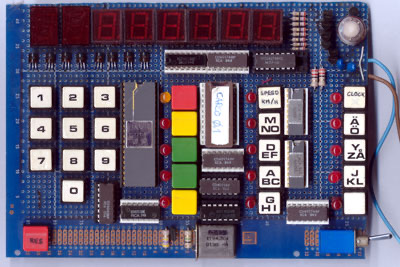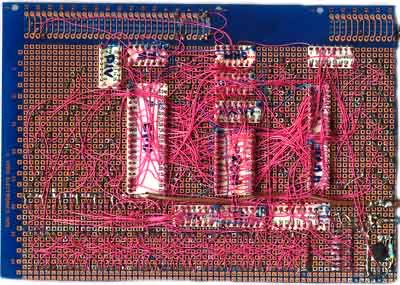Many cars have computers of some sort built in to them now, but Christian Godzinsky got there first with an overclocked 1802.

From Christian: “These two images are of my home brew 1802 car computer project. I became an ELF enthusiast at first sight. That happened sometime in 1978 when I read an article about this microprocessor and programming of it in a Finnish electronics magazine. I had all the commercially available kits (those that were designed & produced in Finland). This was the one and only project that I built from scratch (see included photos). My aim was to build a car computer that shows the exact speed, travel time and fuel consumption, and whatever you can calculate thereof. The board had an 1802 processor running at 8 MHz, 4K of ram and 8K EPROM. Additionally the needed electronics for a 8 digit 7-segment led-display (the refresh multiplexing was done in software), a 25-key keypad interface, pulse inputs for both speedometer pulses and pulses from a flow-meter. And as you can see, also an LDR (light depending resistor) to control the display brightness depenging on the ambien light condidions. I wrote the software directly in assembly due to the inherent simplicity and orthogonality of the processor. No compiler or operating systems to bother about! I used wire-wrap sockets and wire wrapping of the components — a very reliable and convenient technology to produce prototypes. Well — this was a one-of project anyhow. Those were the days…”

I wrote Christian back to make sure the 8MHz wasn’t a misprint. Here’s his response:
“I ran my prototype on 1.6 MHz but it was too slow for all the math. I was able to get one of the latter CPUs and actually did some overclocking — most probably again well ahead of anyone. The CPUs in the ceramic cases could easily be overclocked to 6 - 8MHz by increasing the operating voltage to 7 volts and using an 50/50 duty cycle external oscillator. The power dissipation increased a lot but the CPU was still ‘touchable’…”